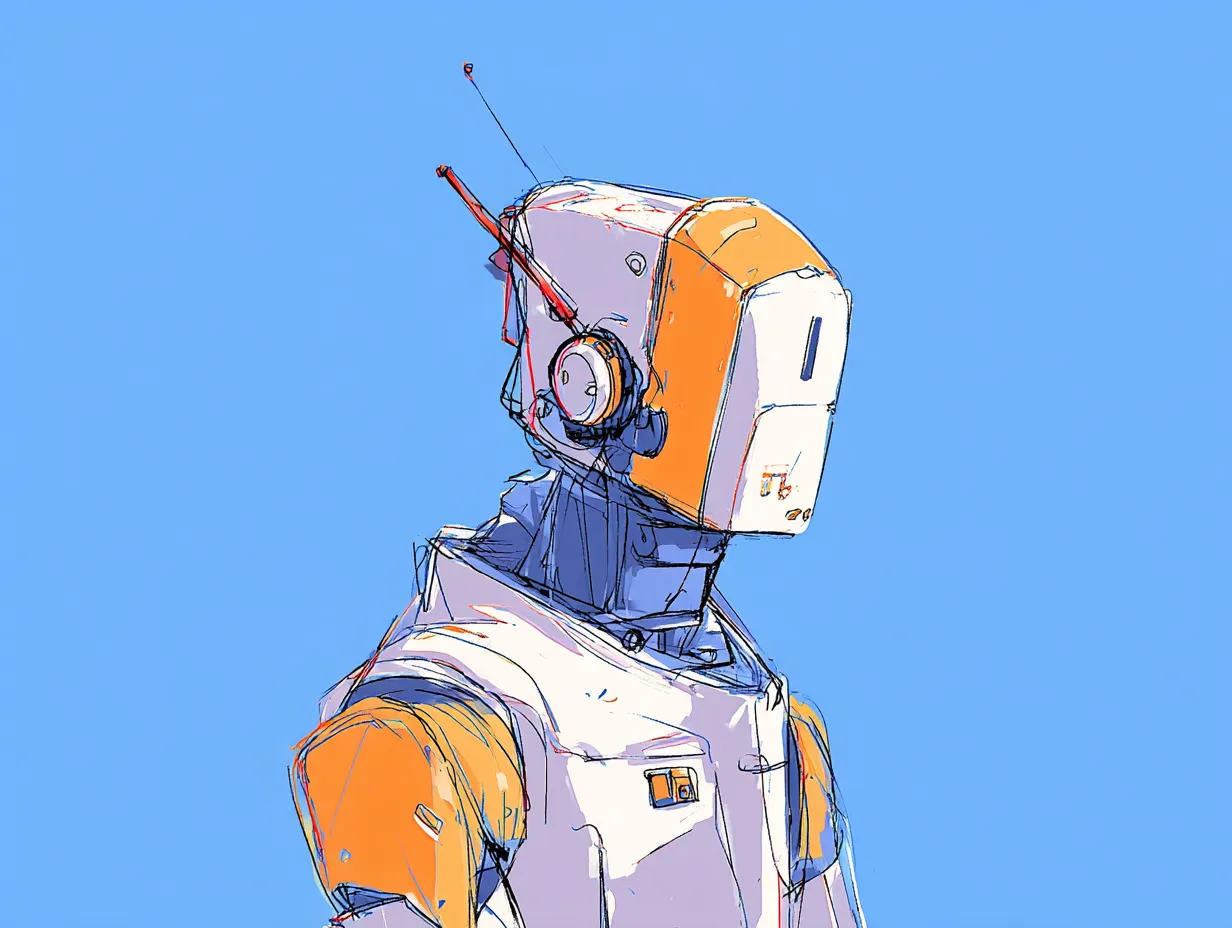Table of Contents
Key Takeaways:
- Chinese companies like Unitree are pioneering affordable humanoid robots, reducing costs from $1 million to around $100,000
- China's manufacturing ecosystem and supply chain advantages mirror its EV industry success, giving it a significant edge over US competitors
- Open-source approaches are democratizing robot development, creating a boom in humanoid research that was previously limited to elite institutions
- Despite US advantages in software and AI, China's government-backed financing and industrial policy are accelerating its progress in the sector
- Analysts predict humanoid robots could become the next transformative technology after smartphones and EVs, with a potential market worth up to $205 billion by 2035
The Silver Warrior That Refuses to Fall
In a gleaming facility in Hangzhou, China, visitors are encouraged to do something that would be considered rude in most social contexts: push and kick a silver humanoid figure that stands calmly before them. The 1.3-meter-tall G1 robot from Unitree absorbs each impact, adjusts its balance, and remains standing – a physical demonstration of resilience that serves as an apt metaphor for China's rapidly growing humanoid robotics industry.
"Go on, give it a real shove," urges a company representative, as I hesitantly apply pressure to the robot's metallic shoulder. The G1 shifts its weight, compensates with subtle movements, and maintains its position. This isn't just a parlor trick; it's a showcase of sophisticated mechanics, sensors, and artificial intelligence that might represent the beginning of a new technological era – one where China, not America, leads the way.
The Dance That Captivated Millions
During China's spring festival gala earlier this year, millions of viewers watched in awe as 16 of Unitree's H1 robots performed a synchronized folk dance on live television. The robots moved with surprising grace, their mechanical limbs flowing in concert as they executed complex movements. This was no remote-controlled performance – each robot was making thousands of real-time calculations, adjusting for balance and position while maintaining the choreography.
"We're experiencing something similar to the early days of smartphones," explains Wang Xingxing, Unitree's founder and CEO. "I believe our industry will have its 'iPhone moment' within the next five years – a breakthrough product that changes how people think about robots in their daily lives."
If Wang is right, this shift could represent a seismic change in the global tech landscape. Investment banks are bullish: Goldman Sachs projects the global humanoid robot market could reach $205 billion by 2035. Bernstein Research anticipates annual robot sales of up to 50 million by 2050. Citibank forecasts 648 million humanoid robots by 2040, while Bank of America sees an even more ambitious 3 billion by 2060.
The Supply Chain Advantage
While the United States can claim pioneering robotics companies like Boston Dynamics and newer entrants like Tesla's Optimus program, China's advantage lies in its manufacturing ecosystem – the same advantage that helped it dominate the electric vehicle market.
"The parallels to the EV industry are striking," says Johnson Wan, an industrial analyst at Jefferies. "China has the deep electronics and EV supply chain that gives it a substantial head start. Many of the critical components for humanoid robots – actuators, batteries, vision systems – are already made in China for electric vehicles."
This translates to significant cost advantages. Bank of America analysts estimate that the components in Tesla's second-generation Optimus robot would cost about one-third less if Chinese parts were used instead of non-Chinese suppliers. In one telling example, China boasts 25 companies providing components for dexterous robot hands, compared to just seven in the United States.
"China is very good at hardware," Wan acknowledges, "but on innovation and software, the US still has an advantage." This includes Nvidia's AI processors, which remain the "brains" of most advanced humanoids regardless of where they're built.
Democratizing Robot Development
What's most revolutionary about China's approach may be how it's opening up humanoid development to a broader community. Bruno Adorno, a reader in robotics at the University of Manchester, credits Unitree with catalyzing a research boom by making previously exclusive technology accessible.
"It wasn't possible before Unitree," Adorno explains. "They've lowered the cost of procuring a humanoid robot from up to $1 million to roughly $100,000 for their programmable H1 model."
Just as importantly, Unitree has made their control code available for free, allowing researchers and developers to build on their platform rather than starting from scratch. "We're developing novel techniques that improve the behavior of the robot and unlocking capabilities by plugging into Unitree's API," says Adorno.
This open-source approach bears a philosophical resemblance to how Android helped democratize smartphone development – but with a distinctly Chinese character. Bernstein analysts note that "China acts extremely fast in product and use case multiplication, while US players seem to shoot for the Holy Grail solution; China adopts the 'natural selection' approach with vastly diverse product models."
The State Behind the Machines
Like many Chinese technology success stories, the humanoid robot boom benefits from significant government support. During the annual parliamentary meeting last month, Beijing officially designated humanoid robotics a strategic industry worthy of support and has begun directing substantial funding to startups in the space.
Unitree's founder Wang was recently granted an audience with President Xi Jinping – a clear signal of the technology's importance to the country's leadership. Government funds, including the China Internet Investment Fund (aligned with the country's cyber regulator) and a state-backed Beijing robot fund, have invested in Unitree alongside private entities like HongShan (formerly Sequoia Capital China) and delivery giant Meituan.
"AI-powered robots may not only be the future direction of development for China but possibly the entire world," declared Shen Zhengchang, a delegate to China's legislature. "China is striving to dominate the industry."
This government backing extends beyond financing. China's Ministry of Industry and Information Technology has published a detailed roadmap for the industry, while a new 1 trillion yuan ($137 billion) state-led venture capital fund will provide additional resources. Local governments are racing to attract companies with subsidies and infrastructure support.
Training Farms and Real-World Applications
In Shanghai, officials have established what amounts to a training farm for robots – a facility where humanoids repeatedly perform tasks to generate the data necessary for machine learning. State-owned Shanghai Electric, which backs the project, says the facility currently houses 100 humanoids with plans to scale to 1,000 machines by 2027.
The goal is clear: to develop general-purpose robots that can match the effectiveness of specialized industrial robots but with far greater flexibility – a development that could revolutionize manufacturing.
For now, practical applications remain limited but growing. Some local Chinese police units have begun using robodogs and occasionally humanoids on neighborhood patrols. Retail stores have deployed humanoids primarily for their novelty value in greeting customers. Factories are in early stages of integrating humanoid robots into production lines.
Markus Fischer, a robotics specialist at German tech consultancy Exxeta, describes the current state of development: "It took about 10 days to program a G1 to walk freely around my office, navigating by the lidar in its head instead of remote control."
While robots still struggle with seemingly simple tasks like opening doors, Fischer sees near-term potential for inventory management or stocking supermarket shelves. "Grabbing stuff for humans is very easy," he notes. "We see a glass and we grab it and we know if we put too much force, we could break it, but the robot has to be taught to do that."
The Road Ahead
Not everyone shares the enthusiasm for humanoid robots. Chen Guishun, robotics head at Shenzhen-based industrial automation company Inovance, questions the fundamental approach: "Bipedal movement is the least energy-efficient and most expensive solution. Tracked or wheeled structures can achieve mobility just the same."
Prominent Chinese venture capitalist Allen Zhu recently told local media that his firm was exiting its humanoid investments, noting that despite the hype, new customers have been limited primarily to "state-owned enterprises buying them to display at the front desk."
Yet the trajectory seems clear. Just as China leveraged its manufacturing prowess to become the world leader in electric vehicles, it appears poised to do the same with humanoid robots. The combination of hardware expertise, government support, and an ecosystem of suppliers and developers creates a powerful foundation for growth.
For America's tech giants and robotics startups, the challenge is formidable. The race to create the machines that may one day work alongside us – or even replace us in certain tasks – has a new frontrunner. And it's not Silicon Valley.
As I leave Unitree's facility, I turn back for one last look at the silver G1 robot standing sentinel in the demonstration area. A visitor gives it a particularly forceful shove. The robot wobbles momentarily, shifts its weight, and stabilizes. Like China's robotics industry itself, it refuses to be knocked down.









